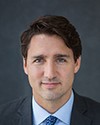Mr. Speaker, I will be splitting my time with the member for St. John's South—Mount Pearl.
I am pleased to rise today to speak to Bill C-15, the budget implementation bill.
Just a short time ago, I had the opportunity to stand and speak to budget 2016, which I referred to as a middle-class, or better yet, a growth budget. I spoke about a budget based on the fundamental principles of investing in and strengthening our middle class as well as revitalizing the Canadian economy with a historic $120-billion infrastructure investment plan.
I also talked about how the budget would help ensure a prosperous future for the residents of my riding of Vaughan—Woodbridge, and in fact, for all Canadians.
Most important, I spoke about how, as a father of two young daughters, Natalia and Eliana, budget 2016 puts in place a plan for economic growth not only for today, but for successive generations so that all our children will inherit a more prosperous and hopeful country.
Bill C-15 is the concrete foundation emanating from the budget 2016 blueprint. The bill makes real the principles and commitments laid out by our government, such as the principles of greater tax fairness for Canadians, the belief that we should be there for our seniors to ensure they have a dignified retirement, a firm commitment to families with the introduction of the truly transformational Canada child benefit, a large step forward to honour our commitments to Canada's veterans, and significant improvements to the Employment Insurance Act.
Bill C-15 also continues to work on strengthening our financial system with the introduction of a bail-in regime for banks, which ensures that Canada's banks remain the soundest in the world, and very importantly, that Canadian depositors and taxpayers remain protected.
Bill C-15 contains 15 divisions. It had to be substantial, because our budget made substantial commitments to Canadians, and the technical underpinnings of these commitments are contained in this piece of legislation. Because there is so much to speak about in the bill, I am going to focus on a few sections.
I have stated how proud I am of this government's commitment to families, and Bill C-15 makes good on that commitment by introducing the Canada child benefit. The Canada child benefit will replace the current system of the Canada child tax benefit and universal care benefit. This transformational CCB will be simpler, tax-free, and paid monthly to eligible families beginning in July of this year.
Nine out of ten Canadian families will receive more under the Canada child benefit than under the current system. Overall, about 3.5 million Canadian families will receive this benefit, with the average increase in child benefits at almost $2,300 annually.
Independent analysis, and I emphasize independent analysis, indicates that 300,000 fewer Canadian children will be living in poverty in 2016-17 than in 2014-15.
I am proud to be part of a government that is taking this bold step to build a better and what I believe is a more just and inclusive society.
As I have stated repeatedly, seniors built this great country and we will always be indebted to them. Bill C-15 contains measures to increase the GIS, the guaranteed income supplement, by providing up to an additional $947 per year to our most vulnerable seniors, single seniors, the majority of whom are women. Seniors with personal incomes, excluding OAS and GIS payments, between zero and $8,400, will see increased benefits. This step will help improve financial security for about 900,000 of our most vulnerable senior Canadians.
Members should know that budget 2016 does not impact pension income splitting for seniors. This will remain in effect.
A large portion of the budget implementation bill addresses regulatory changes to our financial system. There is a very good reason for this emphasis in the legislation. The strength of our economy and the middle class in large measure rests on the stability of Canada's financial institutions. Canadians rely on our banks and credit unions on a daily basis for virtually every aspect of their lives.
While the failure of a large Canadian bank is very unlikely, it is still important that authorities have adequate tools to promote and preserve financial stability as well as to protect taxpayers in a crisis. Canadian banks are among, and I would argue are, the soundest in the world. They have robust levels of capital, lending practices that are sound, and stood out as pillars of strength during the 2008 global financial crisis.
I had a first-hand view of the global financial crisis. I know full well the benefits of the sound regulatory environment governing our financial system.
I would be remiss if I did not add that, while I worked in New York City during the 1990s, it was a Liberal government under Prime Minister Chrétien and finance minister Paul Martin that said no to the Canadian banks merging. I believe this decision is the major reason our banks came out of the 2008 global financial crisis with flying colours.
The bail-in regime contained in Bill C-15 would strengthen the tool kit and only apply to Canada's domestic systematically important banks and allow our regulators to recapitalize a failing bank by converting eligible long-term debt into shares.
More important, the bail-in regime makes it clear that the shareholders and creditors of Canada's largest banks are responsible for the banks' risks, not taxpayers. This way Canadians are not stuck with the tab in the event of an economic crisis.
This regime is consistent with international best practices and standards that were developed following the financial crisis of 2008 and although we have a robust banking sector, the provisions contained in the legislation would provide the legislative framework for the regime, with regulations and guidelines to follow.
I wish to make clear to all Canadians that insured and non-insured deposits would continue to be protected by the Canada Deposit Insurance Corporation.
In addition to the bail-in provisions, there are also a number of technical changes in this legislation which would help strengthen credit unions and the CDIC.
Bill C-15 would also help Canadian families by putting into place changes to the Employment Insurance Act which would assist those Canadians impacted by the very unfortunate situation of a job loss. In fact, the changes our government would implement would increase employment insurance payments to unemployed Canadians by $2.5 billion over the next two fiscal years.
Key improvements include extra weeks of benefits for workers in regions affected by a downturn in commodity prices. In addition, the waiting period would be reduced from two weeks to one week and would provide unemployed workers with hundreds of dollars more at the time they need it most.
Our government will work and create the conditions for all Canadians to find meaningful employment. That is what we want. However, we must ensure a system that would provide help when Canadians and their families require it.
During the election campaign, one of our key commitments was to greater tax fairness for middle-class Canadians and all Canadians. Our government has also introduced Bill C-2, which would lower the income tax rate for middle-class Canadians. Today, over nine million Canadians are benefiting from lower taxes, with a total tax reduction of approximately $3.4 billion.
Bill C-15 would provide even further tax fairness measures with amendments to the Income Tax Act contained in the first three parts of the bill. For example, we have added insulin pills and needles, feminine hygiene products, as well as catheters, to the list of items that are exempt from GST/HST.
The budget bill contains provisions that would increase the maximum benefit under the northern residents deduction, exempt taxable income amounts received as rate assistance under the Ontario electricity support program, and, quite proudly, introduce a teacher and early childhood educator school supply tax credit. This measure alone would provide a benefit of $140 million over five years in tax relief to our educators.
These are just a few examples of the elements contained in Bill C-15.
As I had previously stated, budget 2016, the middle-class or growth budget, provides a blueprint for a hopeful future for all Canadians. Bill C-15 is a solid legislative foundation for the future.
I hope my colleagues on both sides of the aisle will join with me in supporting the bill.











